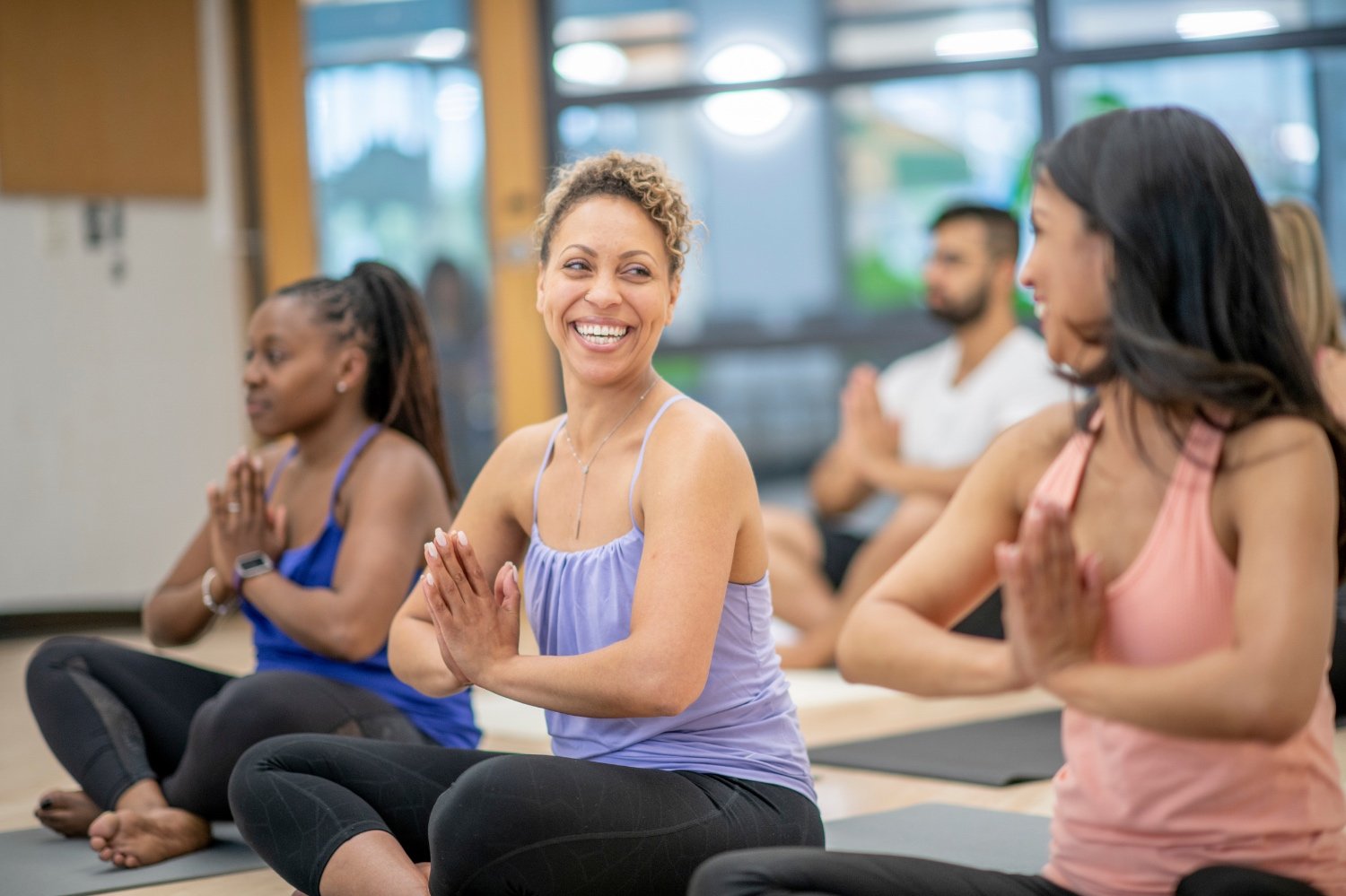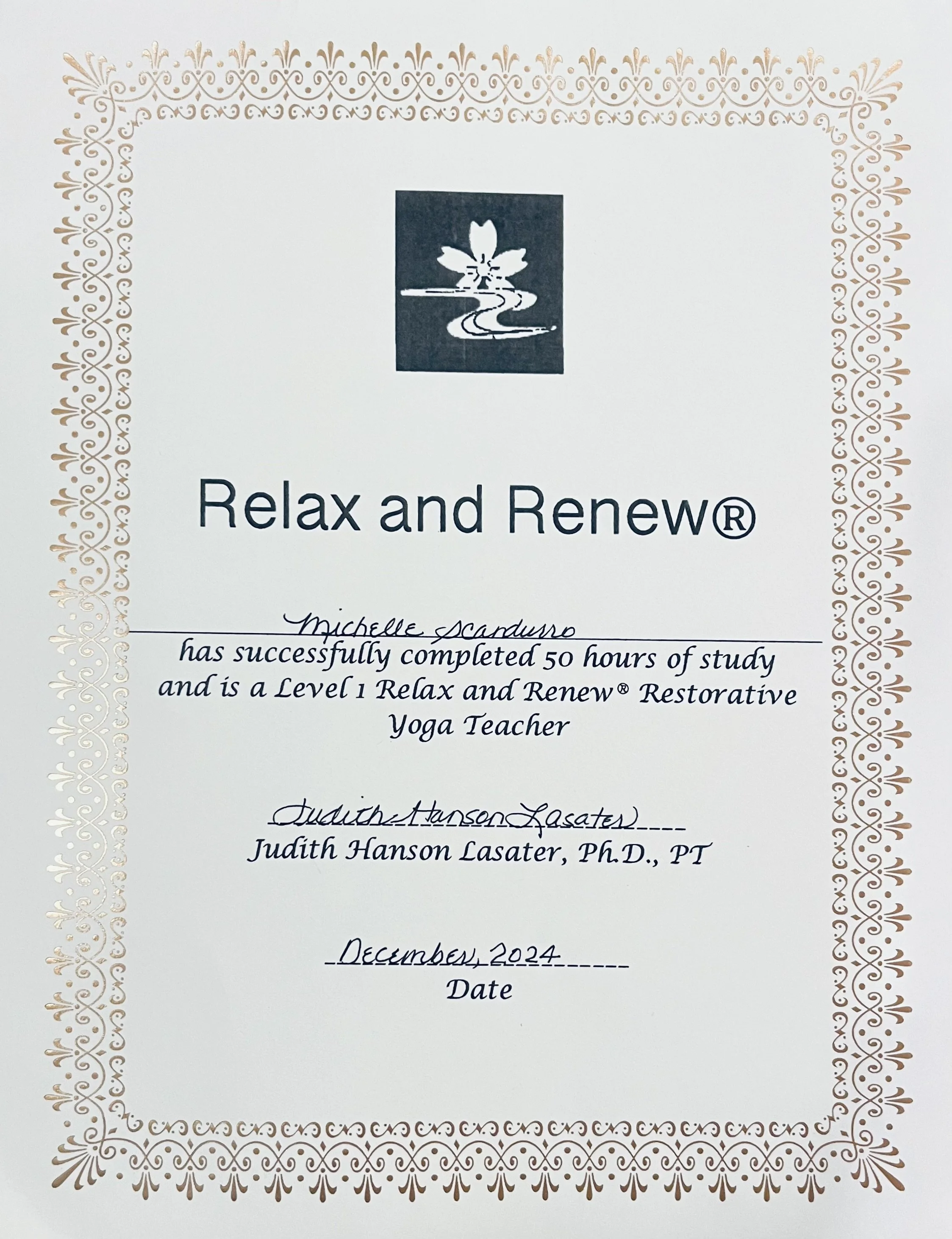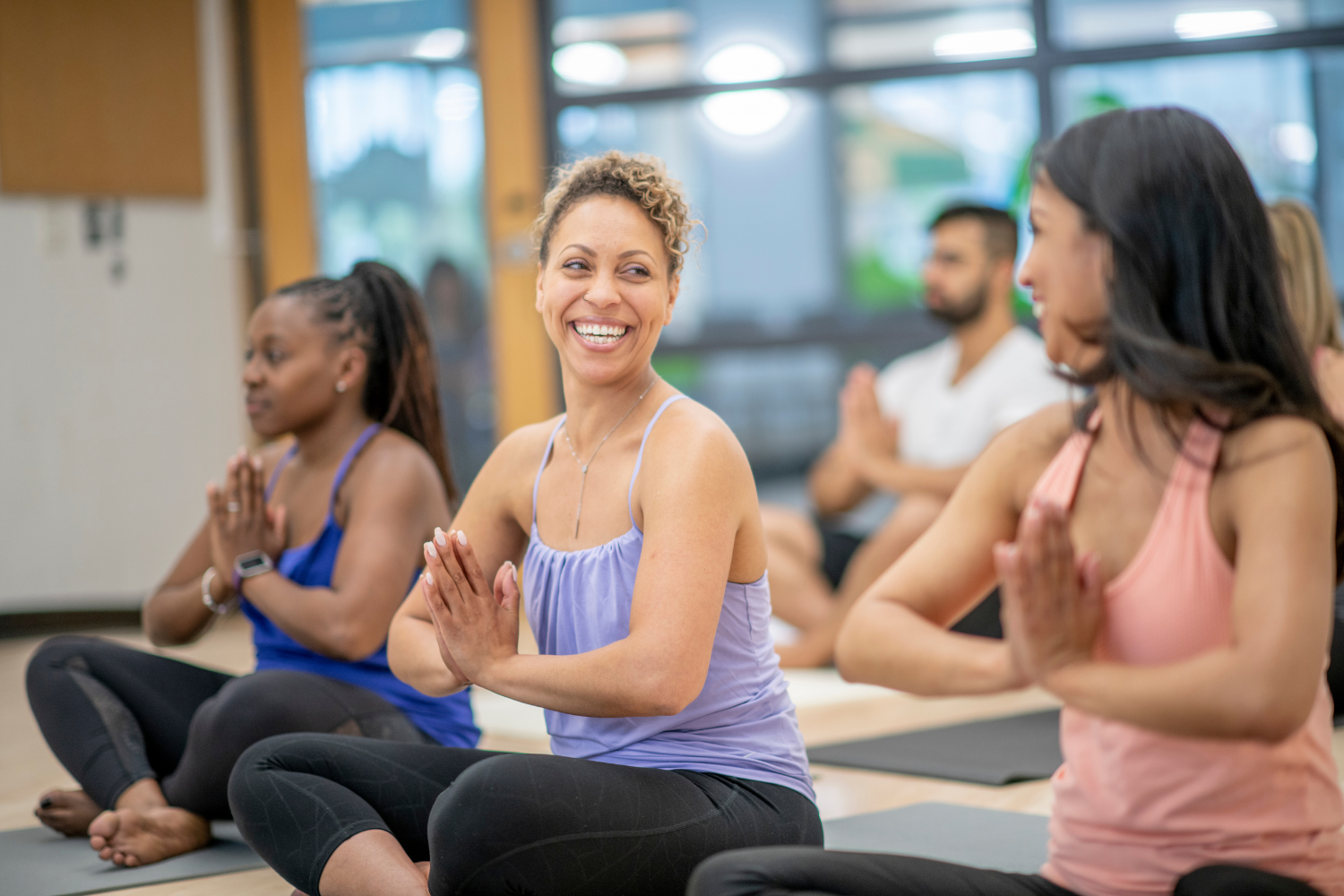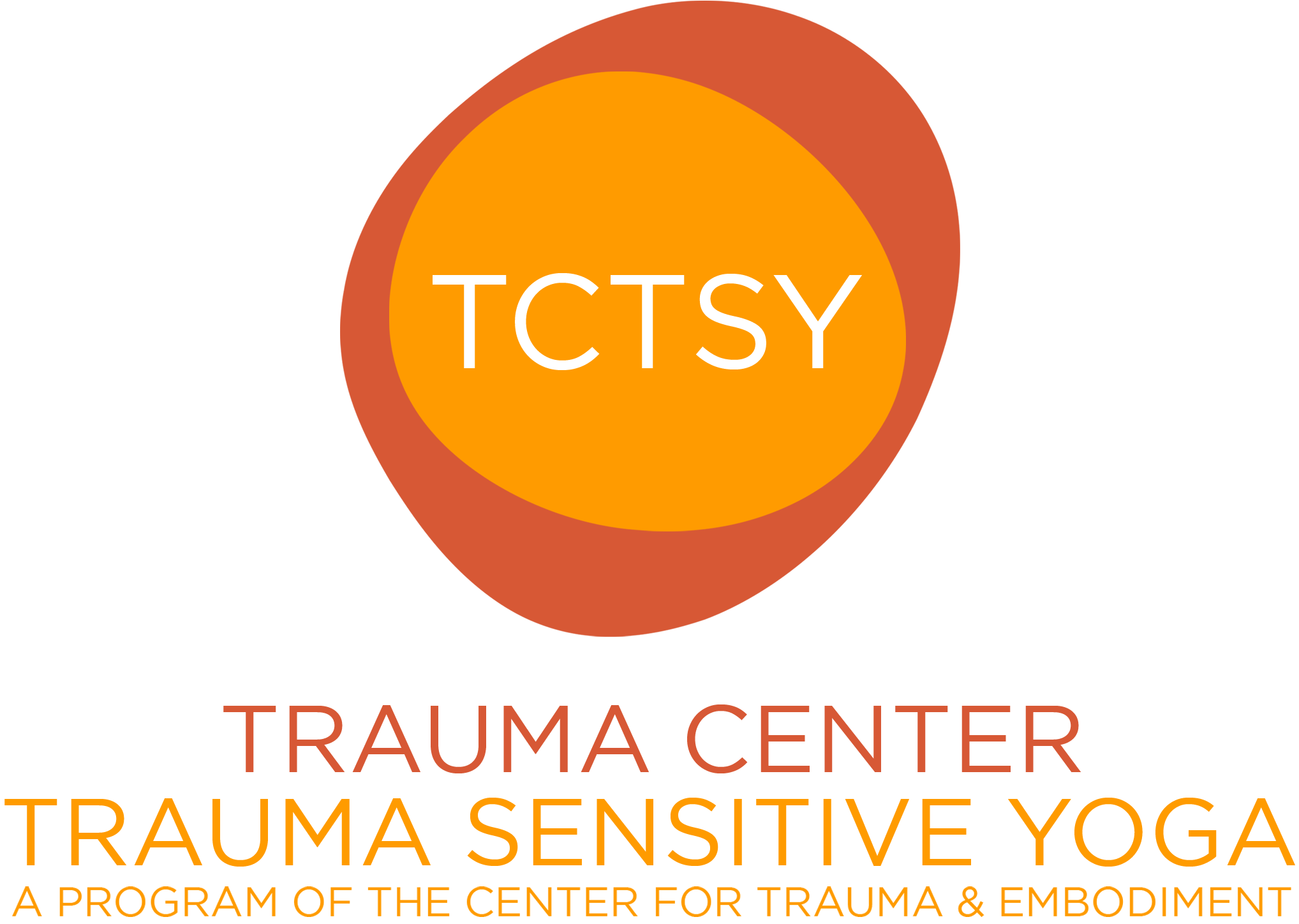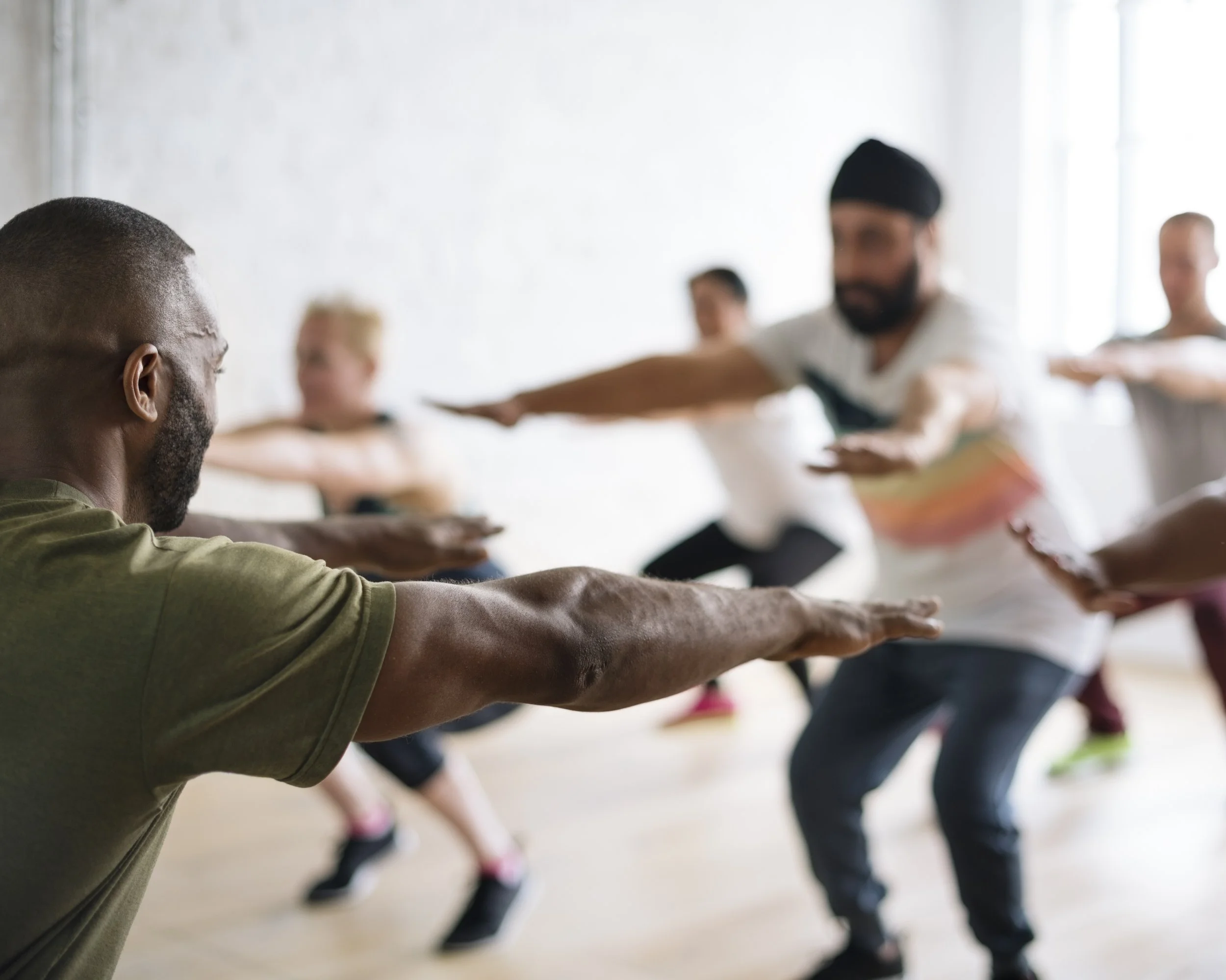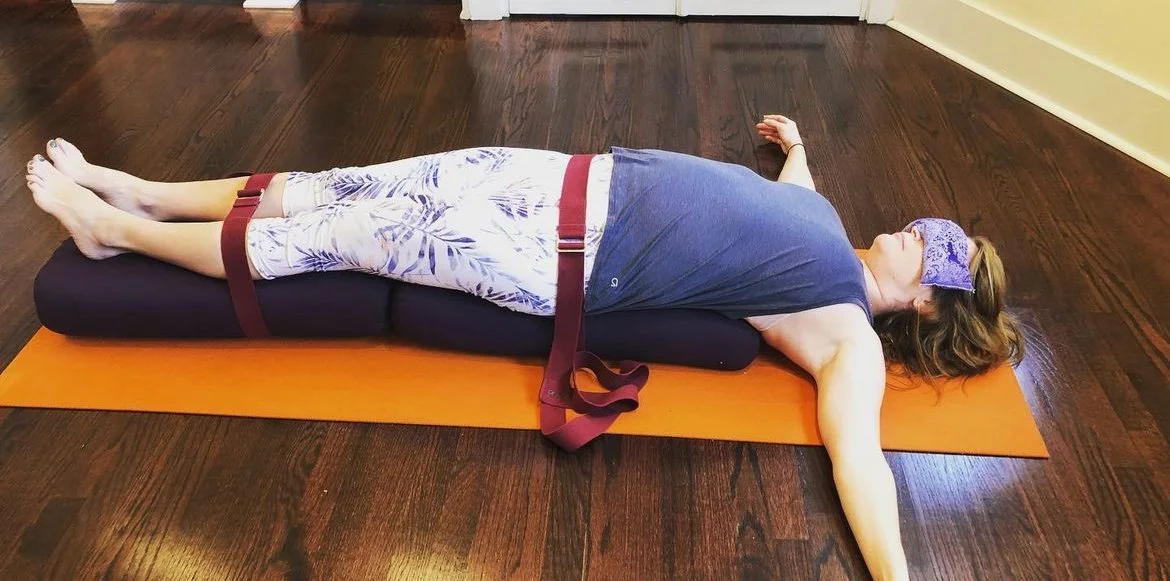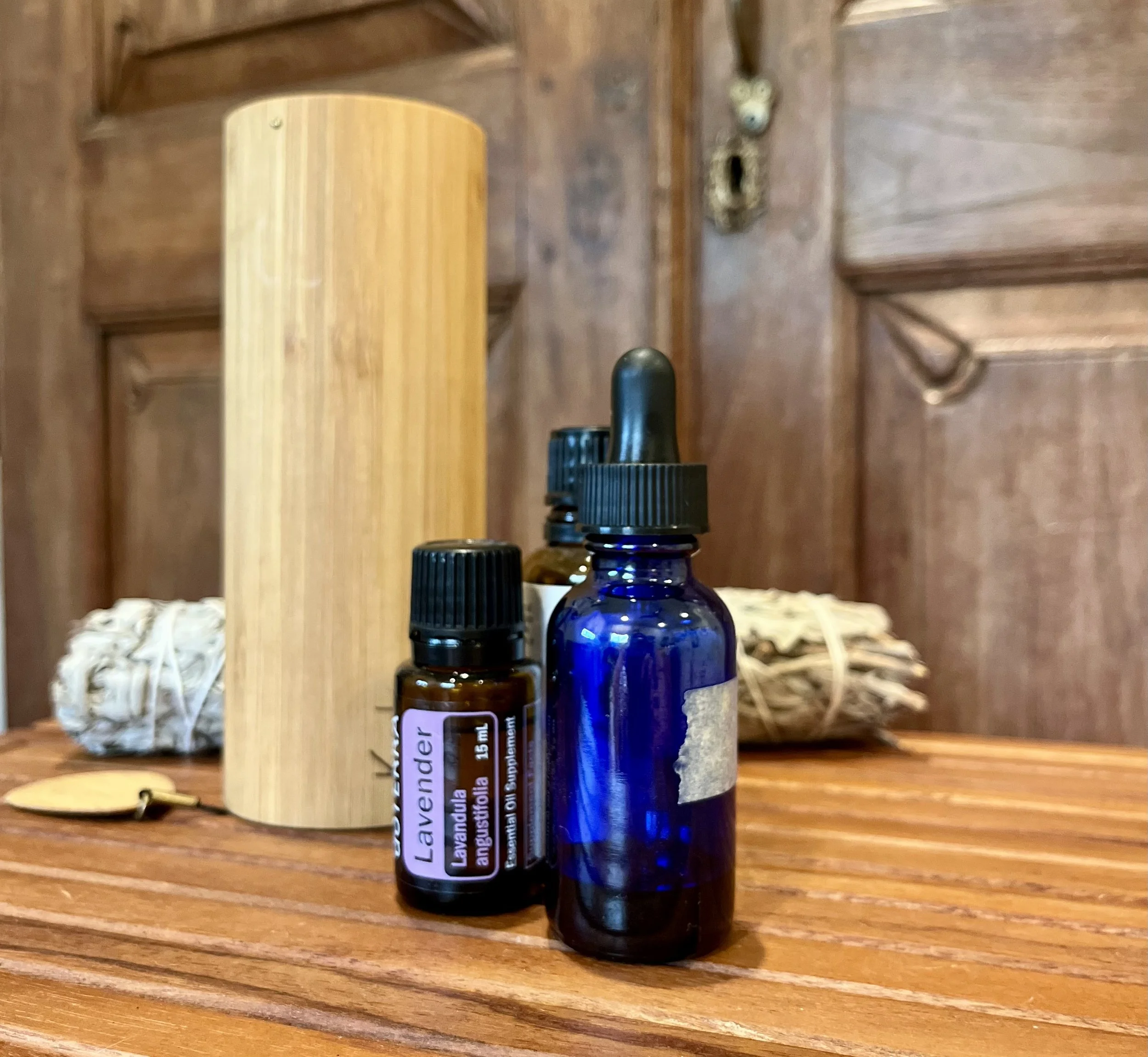ABOUT michelle
I came to yoga looking for my own body. I was newly sober & realized that alcohol had kept me from hearing what my body was desperately trying to tell me.
TCTSY helped me to open up & make friends with my body, which was the first step in a long journey of healing. Almost immediately, I wanted to share what I’d learned from yoga & mindfulness with others. I realized that my background as a high school teacher had prepared me to hold a space of growth & healing for others.
qualifications:
Mindful Meditation Teachers Certificate (MMTCP), 2023
RYT 500, 2025
TCTSY-F, 2025
Relax & Renew Restorative Yoga, 2025
about Tctsy
Trauma Center Trauma Sensitive Yoga (TCTSY) is a trademark of the Center for Trauma & Embodiment. This form of yoga practice was developed over 20 years of scientific study of yoga’s potential to treat trauma symptoms.
Rooted in both western scientific theory (Trauma Theory, Attachment Theory, Polyvagal Theory, & Neurobiology) and eastern mind/body practices that are thousands of years old, TCTSY has proven to be an extremely effective somatic therapy.
It was specifically designed for Complex Trauma, but has also shown excellent results for those with PTSD & other dissociative disorders, such as body dysmorphia, disordered eating, autism, and DID.
Shapes are generally held between 1 and 3 minutes each, and the movement sequence incorporates standing, seated, and floor-based shapes. Every shape is optional, and the emphasis is more on internal experience than external form.
Generally, I offer TCTSY either as a series of 8 group sessions or in individual private sessions.
More details about TCTSY practice can be found on the OFFERINGS page. (scroll all the way down)
The CORE ELEMENTS of TCTSY are:
invitational language
choice-making
interoception
non-coercion
shared authentic experience
To keep exploring & read research, visit the TCTSY website HERE.
TCTSY practices use yoga-inspired shapes to provide opportunities for embodied choice-making in the presence of others.
Why 8 sessions?
8 group sessions is a lot up front. From a financial and scheduling point of view, it’s reasonable that committing to a series might give you pause. By far, the most beneficial & rigorously studied form of TCTSY is the 8 session series.
Here are some good reasons:
studies generally found that peak benefits were reached with sustained practice of between 6 and 10 sessions
repeatedly returning to a closed group offers predictability that can lead to a deeper trust in others
the movement sequence is crafted to gently increase dosage & titration of choice-making & attention to your body over 8 sessions
and in trauma treatment, gradual is often best
Restorative Yoga was developed by Judith H. Lasater, a physical therapist & yoga teacher, to open the body and teach it to rest.
In Restorative Yoga, shapes are held for 5-20 minutes, and most are floor-based. We use yoga props to support your body & allow you to let go of as much effort as possible. Alignment is emphasized, and guided meditation is provided. I try to include all five senses to bring yogis into the present moment, which sometimes means offering to anoint with oils, burning sage, and using sound healing instruments. I almost always offer an orange blossom water mist in the first shape of the practice to help people transition out of their day and into the present moment. Restorative practice is extremely helpful in learning to move out of a fight/flight mode.
Restorative Yoga can help you practice regulating your nervous system.
about
restorative
yoga
photo credit: Charlotte Mabry
TESTIMONIALS



